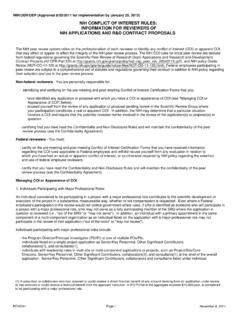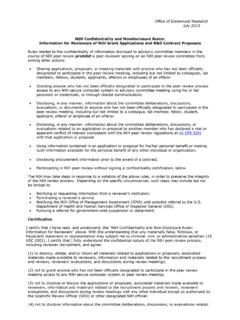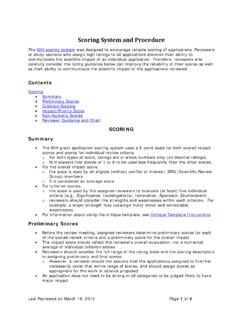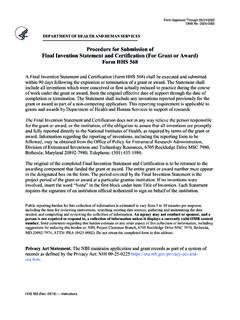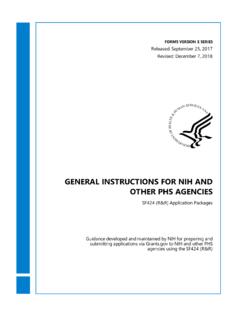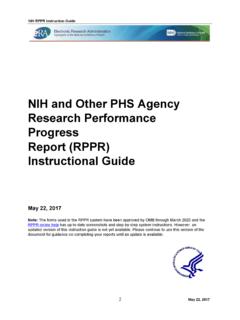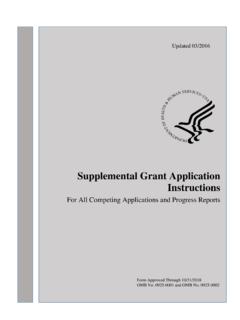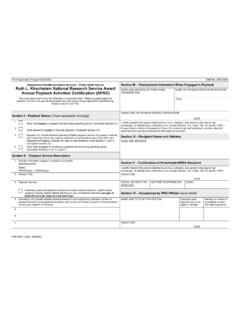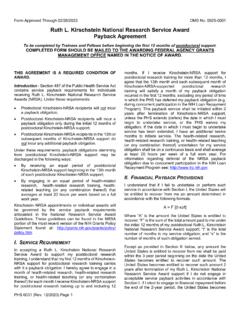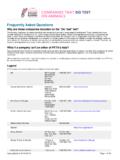Transcription of International Guiding Principles for Biomedical Research ...
1 INTTERNAATIONNAL GGUIDINNG PRINCIIPLESS FFOR BIIOMEDIICAL RRESEARRCH INVVOLVINNG ANIMALS DECEMMBER 2012 COUNCIL FFOR INTERNNATIONAL OORGANIZATIION OF MEDDICAL SCIENNCES and THE INTEERNATIONAL COUNCIL FOR LABORRATORY ANNIMAL SCIENNCE ifir rINTERRNATIONAL Guiding PPRINCIPLESS FOOR BIOMEDDICAL RESEEARCH INVVOLVING ANNIMALS PREAMMBLE The International Guiding Prinnciples for Bioomedical Reseearch Involvingg Animals has been the fraamework for t he developmeent of laws, po licies, and guidelines for oveer 25 years.
2 WWhen the GGuiding Principples were writtten in 1985, tthe professionn of laboratoryy animal mediicine and sccience was sti ll establishing best practicess and standarrds of care. OOver the years,, many of thhese practices and standard s have becomme ingrained inn the oversightt structure of nnumerous coountries. Since the publiccation of the ooriginal Guidinng Principles ,, the scope oof animal reesearch has exxpanded signiificantly, numeerous technoloogical advanceements have ooccurred, annd societal atttention to the wwelfare of reseearch animalss has increaseed. This evoluution has prrompted an uupdate and eexpansion of the focus of the Guiding Principles to address coontemporary isssues facing sscientists whenn animals are used for reseearch and educcation.
3 The revised Inteernational Guiding Principless for Biomediccal Research Innvolving Animmals is thereesult of a parrtnership betwween the Couuncil for Interrnational Orgaanizations for Medical Science (CIOMMS) and the International CCouncil for LLaboratory Animal Science (ICLAS) foormed to updaate the Guidingg Principles . TThese internattional organizaations have a common mmission of ad vancing interrnational collaaboration in Biomedical sciences. Thee revised doocument is the outcome off an internatioonal collaborattion of scientissts, veterinari ans, and otther experts wwhose ideas and suggestioons were gatthered from mmore than 10 different mmeetings held in conjunctionn with severa l scientific co nferences aroound the worl d over a peeriod of more tthan 3 years.
4 Discussions wwere based onn the Statemennts of Principlees for the Use of Animal s from over 330 professionnal societies, organizations, and countriees. The wworking group had an internnational and innterdisciplinaryy membershipp representingg several piivotal stakeho lder professional organizatioons. The revised Innternational GGuiding Principples for Biom medical Reseaarch Involving Animals reeflect congruennce with the mmore specific g uidance offereed by other national and inteernational aggencies. Thhese Guiding Principles will be a touchhstone for countries with eemerging reesearch and teeaching prograams that use aanimals in deveeloping a frammework of respponsibility annd oversight to ensure the appropriatee use of animmals. They mmay also servve as an innternational beenchmark for ccountries with well-developeed animal-baseed Research pprograms.
5 As noted in 19885, there are vaarying approaches in differeent countries too the use of annimals for reesearch, testinng and teachin g purposes. BBy applying thee these Guidinng Principles aand other doocuments withh more specificc standards of care, each coountry can devvelop a detailed system off guidelines orr regulations thhat is commennsurate with naational customms and social ppractices. The use of animals in reseaarch, educatioon and testingg is an essenntial component of the addvancement oof our understtanding about human and aanimal functioon. This knowwledge is immportant for addvancing humman and animaal health and welfare throu gh disease prrevention annd cures, neww treatments, and drug andd device devellopment. Thee scientific community, unnderstanding that using aniimals is a privvilege entrusteed by society, remains commmitted to ennsuring the heealth and welffare of animalls as an integgral considerattion when ani mals are ussed for these ppurposes.
6 Deceember 2012 fINTERRNATIONAL Guiding PPRINCIPLESS FOOR BIOMEDDICAL RESEEARCH INVVOLVING ANNIMALS The followwing Principles should be useed by the interrnational scienntific commun ity to guide thee responsible use of vertebraate animals in scientific and//or educationaal activities. I. The advancem ent of scientif ic knowledgeis important foor improvemeent of human aand animal heealth annd welfare, coonservation of the environmment, and the ggood of socieety. Animals pplay a vital rolle in thhese scientific activities andd good animal welfare is inttegral to achieeving scientificc and educatioonal gooals. Decisioons regardingg the welfare, care, and usse of animals should be guuided by scienntific knnowledge and professional judgment, ref ect ethical annd societal values, and conssider the potenlntial beenefits and thee impact on thhe well-being oof the animals involved.
7 II. The use of animmals for scienntific and/or edducational purposes is a pri vilege that ca arries with it mmoral obbligations and responsibilitiees for institutio ns and individuals to ensuree the welfare oof these anima ls to thhe greatest exxtent possiblee. This is besst achieved inn an institutioon with a cul ture of care and coonscience in wwhich individuaals working wi th animals wil lingly, deliberaately, and connsistently act inn an etthical, humanee and compliaant way. Instittutions and inddividuals usingg animals havve an obligatioon to deemonstrate reespect for animmals, to be ressponsible andd accountable for their decissions and actions peertaining to a nimal welfare , care and usse, and to enssure that the highest standdards of scienntific inntegrity prevail.
8 III. Animals shouldd be used onlyy when neces sary and onlyy when their u se is scientificcally and ethiccally juustified. The Principles of tthe Three Rs Replacemeent, Reductionn and Refinemment shouldd be inncorporated intto the design aand conduct off scientific and/or educationaal activities thaat involve animmals. Scientifically soound results and avoidance of unnecessaary duplicationn of animal-baased activities are acchieved througgh study and uunderstandingg of the scienti fic literature and proper expperimental dessign. WWhen no alternnative methodss, such as maathematical moodels, computter simulation, in vitro biologgical syystems, or othher non-animaal (adjunct) appproaches, aree available to rreplace the usse of live animmals, thhe minimum nuumber of animmals should bee used to achieve the scientific or educattional goals.
9 CCost annd conveniencce must not taake precedencce over these pprinciples. IV. Animals selecteed for the activvity should be suitable for the purpose andd of an approppriate species and geenetic backgroound to ensurre scientific vaalidity and repproducibility. TThe nutritional, microbiological, annd general heealth status ass well as the pphysiological aand behavioraal characteristiics of the animmals shhould be appr opriate to the planned use aas determinedd by scientific and veterinaryy medical expperts annd/or the scienntific literaturee. V. The health andd welfare of aanimals shou ld be primaryy consideratioons in decisioons regarding the prrogram of vet erinary mediccal care to incclude animal aacquisition andd/or productioon, transportattion, huusbandry and management, housing, resttraint, and finaal disposition oof animals, wh hether euthanaasia, reehoming, or r elease.
10 Meaasures should be taken to ensure that the animals environment and mmanagement are appropriatee for the speciees and contribbute to the animmals well-bei ng. VI. The welfare, caare, and use oof animals shoould be under the supervisioon of a veterinnarian or scienntist traained and exxperienced in the health, wwelfare, propeer handling, aand use of thhe species beeing mmaintained or sstudied. The inndividual or team responsible for animal wwelfare, care aand use shouldd be innvolved in the developmentt and maintennance of all aaspects of thee program. AAnimal health and wwelfare should be continuoussly monitored and assessedd with measu res to ensure that indicatorrs of pootential sufferi ng are prompttly detected annd managed. AAppropriate veeterinary care should alwayss be avvailable and p rovided as ne cessary by a vveterinarian.
